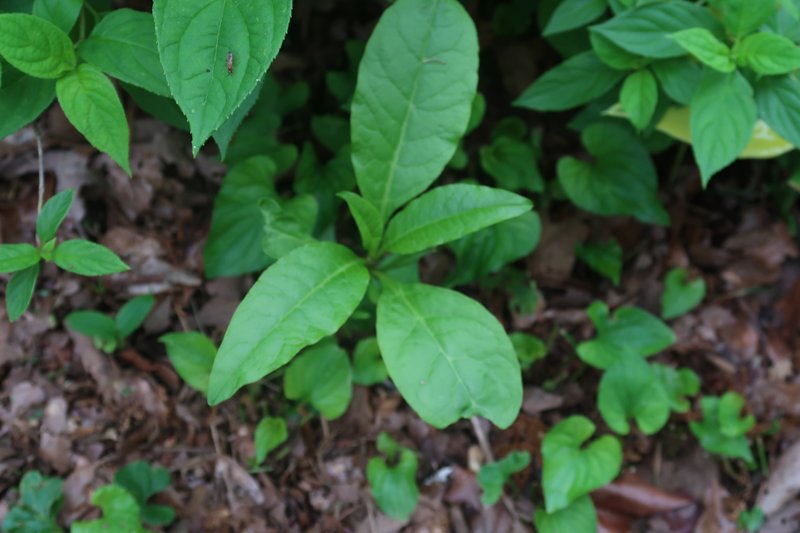Explore Why Some Plants Turn Down Epsom Salt as a Nutrient Source
In the detailed world of plant nourishment, the rejection of Epsom salt as a feasible nutrient source by some plants presents a fascinating quandary. The factors behind this selective habits dive right into a complicated interaction of plant absorption devices, the one-of-a-kind chemical structure of Epsom salt, and plant-specific nutrient preferences.
Plant Absorption Devices
In diving right into the complex world of plant absorption devices, it ends up being noticeable that the process is governed by an advanced interplay of molecular pathways and physiological dynamics. Plants soak up nutrients largely via their roots, making use of numerous transportation systems to uptake vital aspects such as nitrogen, potassium, phosphorus, and magnesium. Magnesium, a crucial part in chlorophyll synthesis and enzyme activation, plays an essential role in plant development and advancement.
The absorption of magnesium involves numerous steps, starting with its schedule in the soil option. When dissolved, magnesium ions are occupied by plant roots via details transport proteins embedded in the cell membrane layers. These healthy proteins help with the movement of magnesium throughout the origin cell wall surfaces and into the plant's vascular system, where it is after that distributed to various tissues to sustain numerous physical functions.
Understanding the intricate devices behind magnesium absorption in plants drops light on just how this necessary nutrient adds to general plant health and efficiency. By enhancing magnesium uptake paths, cultivators can boost plant returns and high quality, underscoring the significance of comprehending plant absorption dynamics for lasting farming techniques.
Epsom Salt Chemical Structure
The chemical framework of Epsom salt, also known as magnesium sulfate heptahydrate, exposes a distinct arrangement of components that contribute to its special buildings and applications. The 7 water particles are loosely bound to the magnesium sulfate compound, allowing it to liquify quickly in water and be easily taken up by plants with their origins.
The crystal framework of Epsom salt creates monoclinic prisms, which are elongated crystals with parallel ends. This crystal form influences the physical residential or commercial properties of Epsom salt, such as its structure and solubility. Understanding the chemical framework of Epsom salt is essential for comprehending its habits as a nutrient resource and its communications with plants in agricultural and horticultural techniques.
Plant-Specific Nutrient Preferences
Plants exhibit distinct preferences for particular nutrients, highlighting the value of recognizing their specific demands for optimum development and growth. These choices are dictated by numerous factors, including the plant varieties, phase of development, ecological conditions, and soil structure. For instance, some plants might prosper in nitrogen-rich dirts, while others call for even more phosphorus or potassium for healthy and balanced growth. Comprehending these plant-specific nutrient choices is crucial for making best use of plant returns, boosting my review here decorative plant growth, and advertising general plant health - what plants don't like epsom salt.

Plant-specific nutrient preferences can additionally vary based on whether the plant is a monocot or dicot. Monocots, such as lilies and turfs, have various nutrient demands compared to dicots like roses and tomatoes. Additionally, certain plants might display specific shortages or poisonings when exposed to excess or insufficient levels of specific nutrients. By tailoring nutrient supplementation to satisfy the specific demands of each plant types, farmers can maximize plant growth, minimize nutrition waste, and support sustainable farming practices.

Soil Ph and Nutrient Uptake
Soil pH plays an essential function in establishing the schedule of essential nutrients for plant uptake. Acidic dirts with a reduced pH are desirable for plants like azaleas and blueberries, while alkaline soils with a greater pH fit plants such as his response lavenders and clematis.
On the various other hand, alkaline dirts may restrict the schedule of nutrients like zinc, copper, and iron, impacting plant development. Keeping the proper pH level in the dirt is necessary for making certain that plants can effectively uptake the essential nutrients for their healthy and balanced development and efficiency.
Hereditary Consider Nutrient Uptake
In the world of plant nutrition, the interaction of genetic elements significantly influences the uptake of crucial nutrients vital for plant development and advancement. Genetic elements play a crucial role in shaping a plant's ability to take in and utilize nutrients properly. Variations in genetics can influence the expression of transportation healthy proteins accountable for relocating nutrients throughout cell membranes. These transportation healthy proteins, such as networks and carriers, are inscribed by particular genetics that can vary amongst plant types or perhaps within the very same species.
Furthermore, genetic elements likewise figure out the effectiveness of nutrient uptake mechanisms within plants. For instance, some plants may have genetic qualities that improve their capacity to scavenge nutrients from the soil efficiently, giving them a competitive benefit in nutrient-poor settings. On the other hand, hereditary variants can likewise result in constraints in nutrient uptake, making sure plants more susceptible to deficiencies even when nutrients are plentiful in the soil.
Understanding exactly how hereditary variables affect nutrient uptake is essential for creating methods to enhance plant nutrition and enhance plant efficiency in various agricultural settings. By untangling the hereditary mechanisms included in nutrient uptake, researchers can work in the direction of creating genetically improved plant varieties with boosted nutrition purchase capabilities.
Final Thought

In the elaborate globe of plant nutrition, the denial of Epsom salt as a feasible nutrient resource by some plants positions an intriguing problem. what plants don't you can look here like epsom salt. Comprehending these plant-specific nutrient choices is critical for maximizing crop returns, boosting decorative plant growth, and advertising total plant wellness
By customizing nutrient supplementation to meet the specific demands of each plant species, cultivators can enhance plant growth, decrease vitamins and mineral waste, and assistance sustainable agricultural methods.
In the realm of plant nourishment, the interaction of hereditary aspects substantially influences the uptake of vital nutrients critical for plant development and development. Recognizing these intricacies in plant nutrient uptake is critical for enhancing plant growth and health in agricultural practices.